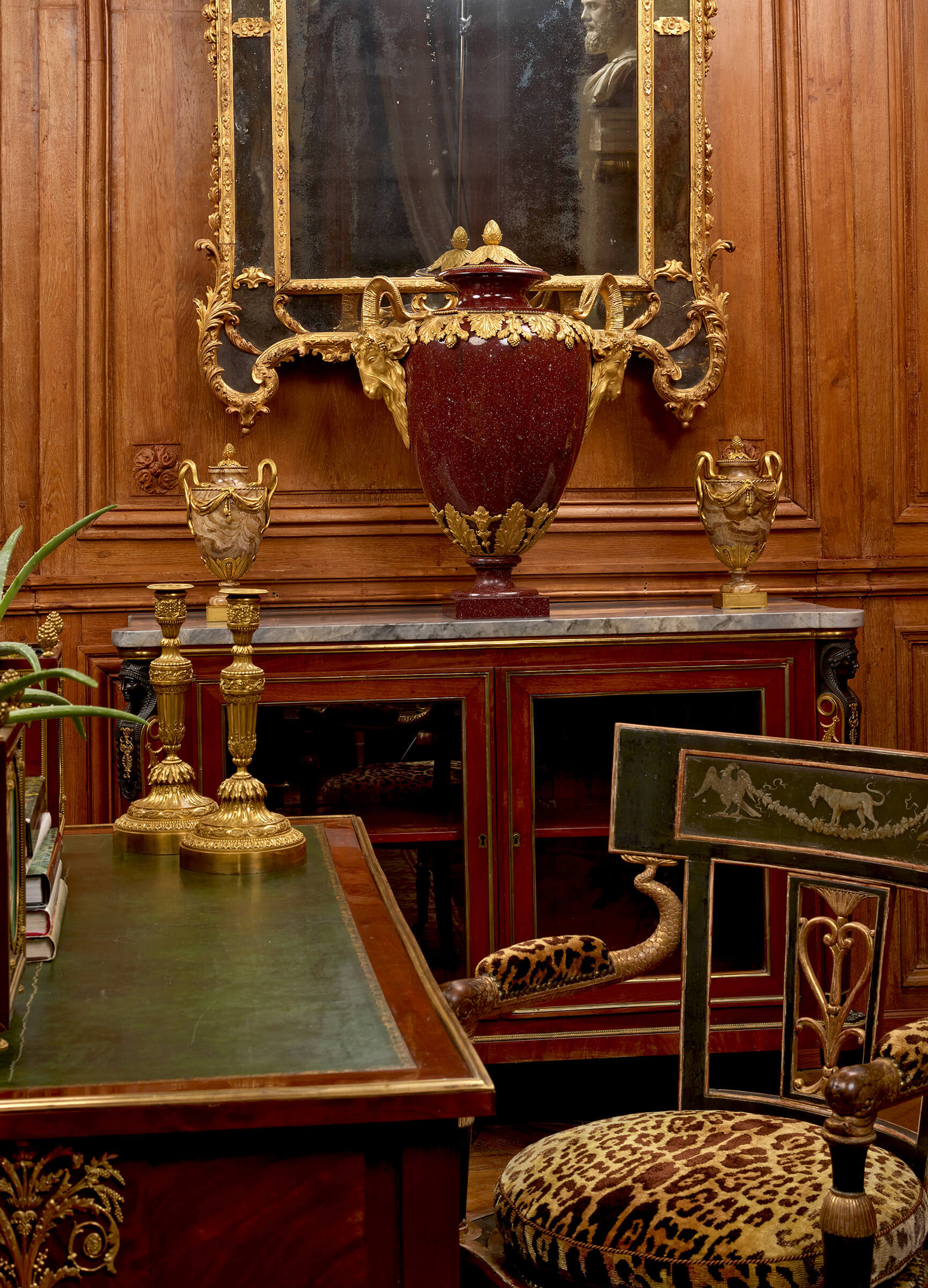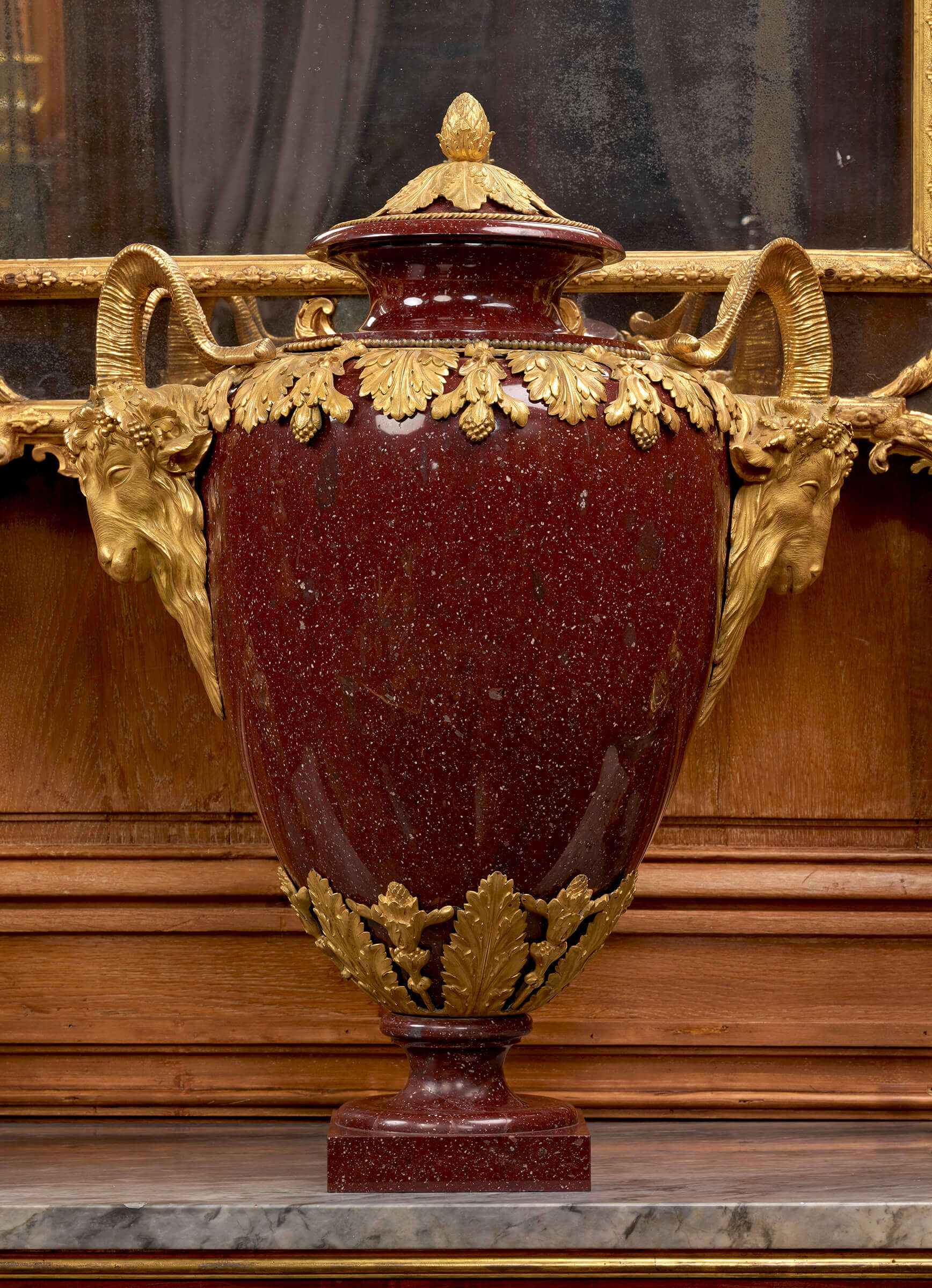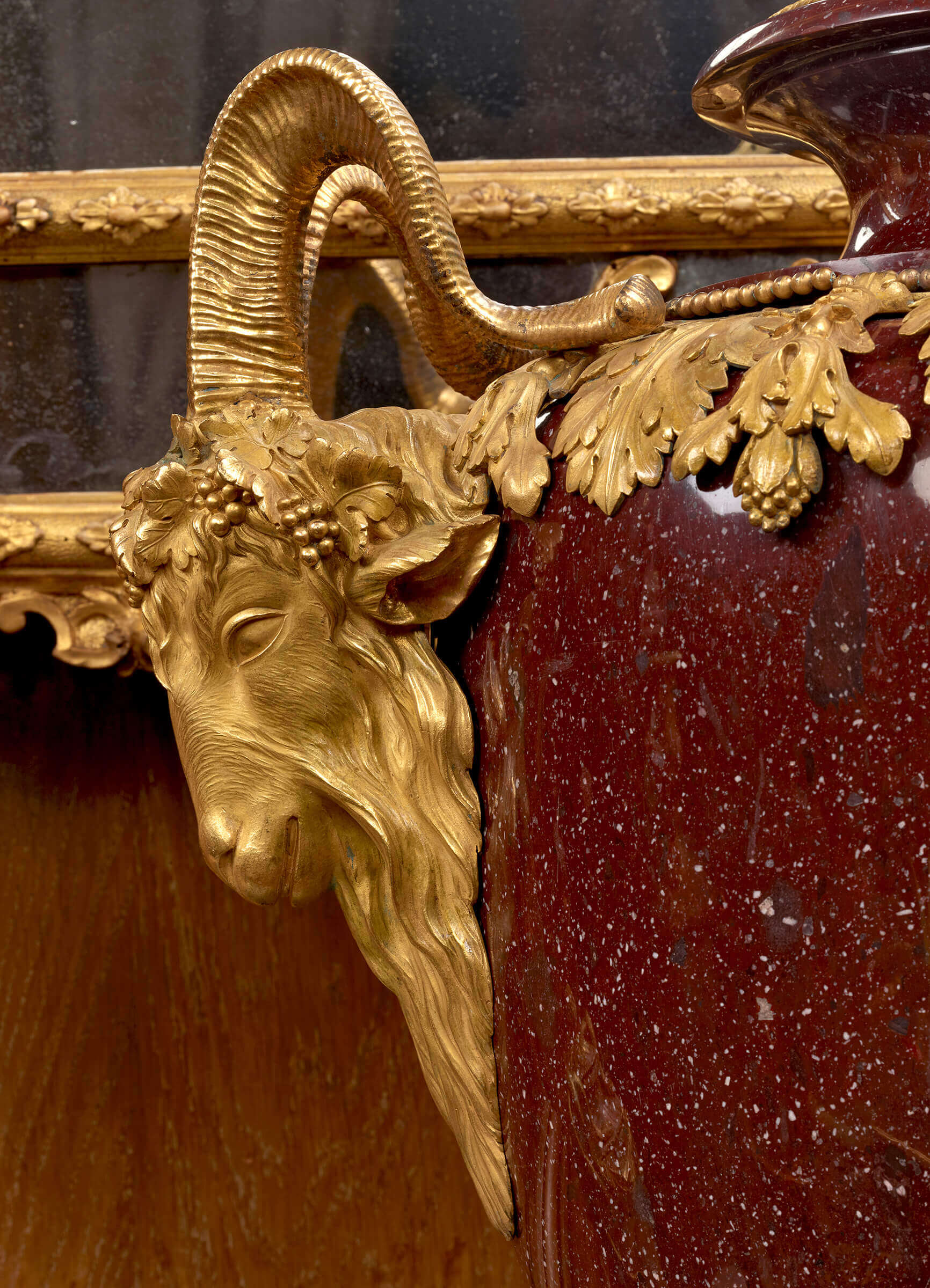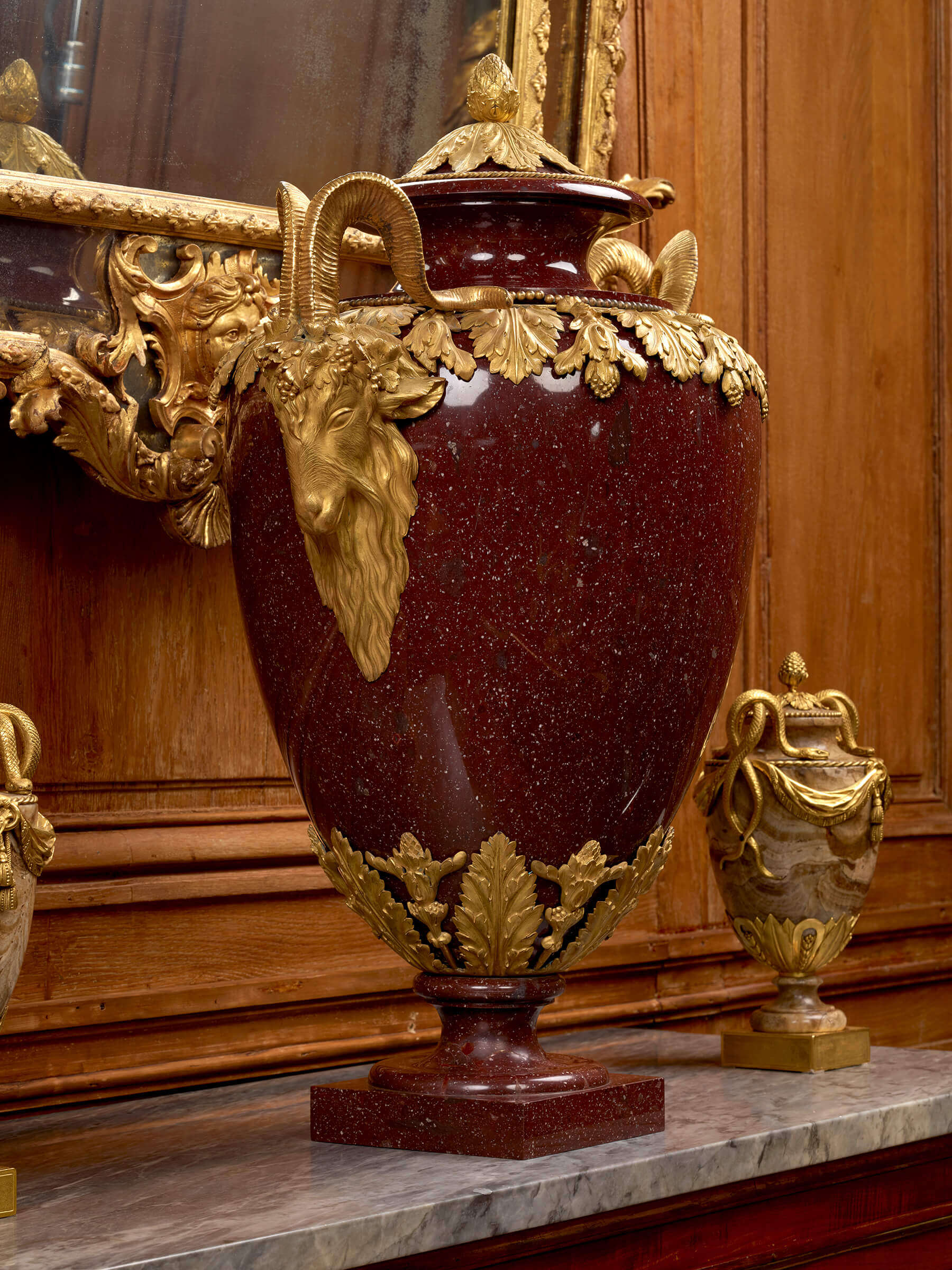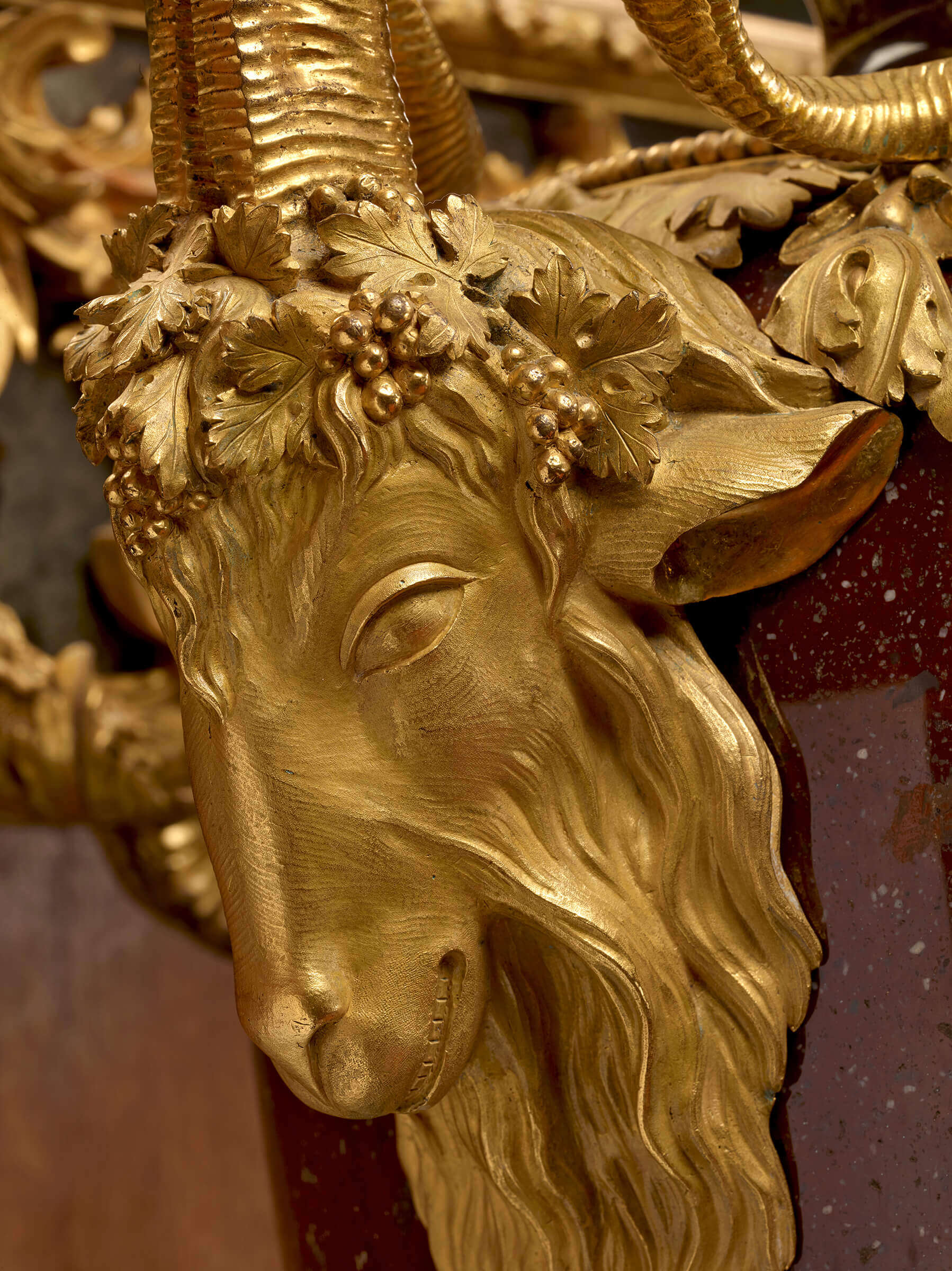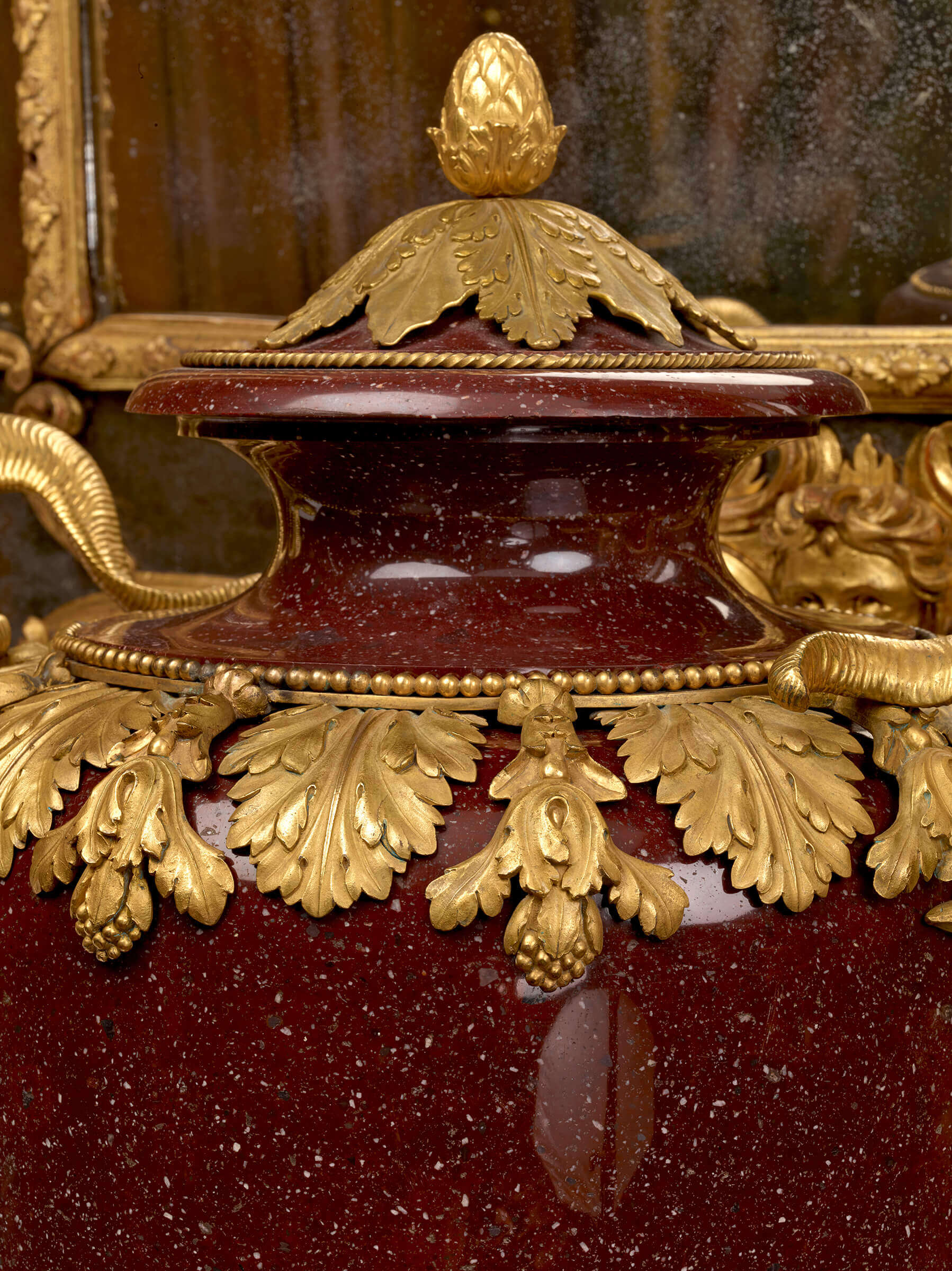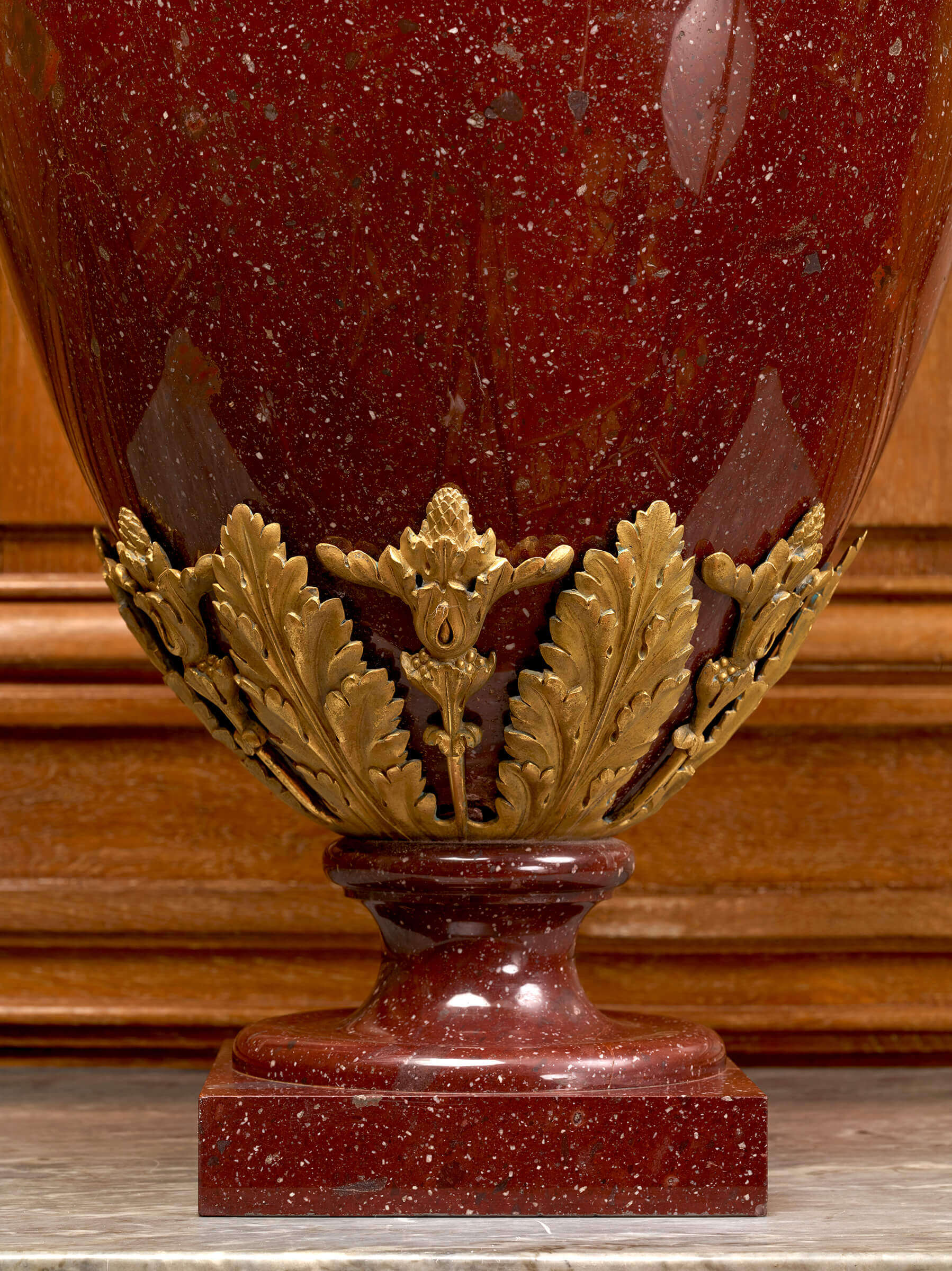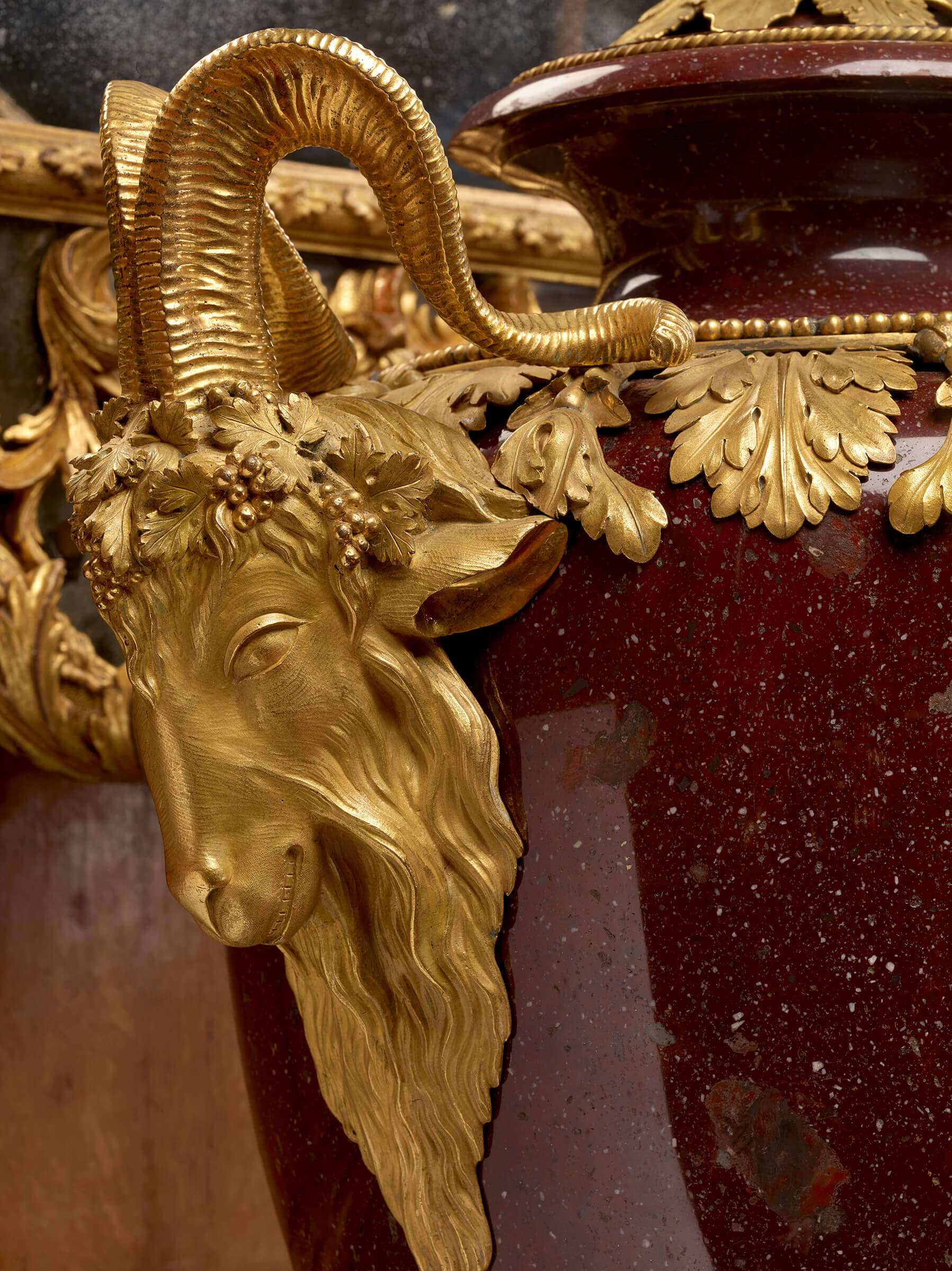

Korgon red porphyry vases: Kolyvan imperial stonecutting workshop, end of the 18th century.
Chased and gilded bronze mounts: Saint-Petersburg, end of the 18th century.
H. 75 cm. (29 ½ in.); W. 57.5 cm.(22 ½ in.).
PROVENANCE: almost certainly ordered as part of a set of six vases by the Count Alexandre Stroganov in the 1780s and delivered to Saint-Petersburg in 1789; almost certainly delivered along with two other vases from the sic to Prince Grigory Potemkin for the Tauride Palace, Saint-Petersburg, in 1790; these four vases then moved to Mikhailovsky Castle, Saint-Petersburg, circa 1802-1804, at which time the chased and gilded bronze mounts were added; probably sold or gifted with contents of the Mikhailovsky Castle following the death of Tsar Paul in 1801; collection of Madame Innocenti, Milan; collection of Maurice Segoura, Paris.
This extraordinary pair of vases is originally part of a set of six Korgon porphyry vases, ordered by Count Alexander Sergeyevich Stroganoff (1733-1811) in the late 1780s, designed in Saint-Petersburg, probably under the aegis of the famous Giacomo Quarenghi (1741-1817), one of the main neoclassical architects in the service of Catherine II of Russia, and executed at the Imperial Lapidary Manufactory of Kolyvan. At first, they were all delivered without mounts.
The close confident and art advisor to Catherine the Great, Stroganoff was a passionate collector. Appointed president of the Imperial Academy of Fine Arts from 1800-1811 on, he was closely involved in imperial orders, and in particular those concerning the three Imperial Stonecutting Workshops administered under the Academy. On several occasions, Stroganoff personally paid shortfalls in the annual budget of the Academy to safeguard the artistic integrity of the production.
